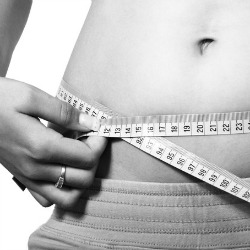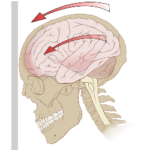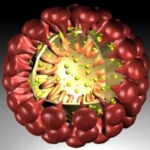
Clinic Success Story: Chronic Headaches
We have all experienced that dull painful pressure, but most of us don’t have to experience it more than a few times a year. Imagine having to endure this pain a few times a week or even everyday. Chronic headache sufferers have my sympathy and when I see them, I try to find the cause of their headaches as soon as I can. Most times the cause is something so simple they can’t even believe that such a little thing could cause such a debilitating symptom. If you or your loved ones suffer from chronic headaches, please read below for some simple strategies to address the most common causes of headaches.
Success Story
I recently saw someone in private practice who came to me complaining of stomach pain. He said it happened every time he ate food and had recently started losing weight because he avoided eating as long as he could each day. The stomach pain had been going on for about a year, but had been gaining intensity in the last few months. His previous doctor prescribed an acid blocking drug for his stomach pain, which helped a little. When I questioned him about other symptoms and daily activities I found the cause of his stomach pain.
He told me that he worked at a computer ~8 hours a day and he suffered from daily headaches for which he had been taking 200mg of Advil® a day for the past 5 years. When I asked him why he didn’t mention the headaches as one of his complaints he told me that he’s had them for about 7 years and that his doctor told him that there was nothing he could do, that some people just get headaches. His stomach pain sounded like a peptic ulcer, which chronic NSAID use such as Advil® can be a large contributing factor. Those who take NSAID’s are 5 times more likely to develop peptic ulcers1.
I assessed the posture he used while working on the computer and gave him a simple eye exam. I determined that his posture was straining his neck muscles and that he was seriously overdue for a new eye glass prescription. I gave him some herbs to help heal and protect his stomach mucosa and a handout for proper computer station posture. The next week he got a new eye glass prescription from his optometrist and in one month he no longer had stomach pain or headaches. He was even able to discontinue his acid blocking drug.
Poor posture and eye strain was creating chronic daily headaches and the Advil® he was taking along with other factors probably created the peptic ulcer. Once these obstacles to health were removed his health complaints resolved.
Common Causes
In my experience, the cause of chronic headaches is typically lifestyle or behavioral related. They’re typically not due to serious pathology, but can profoundly affect quality of life. However, since headaches can occasionally be due to something more serious, you should always see a qualified medical professional for proper evaluation and management. Below, I’ve listed some of the most common and modifiable causes I come across in clinical practice.
- Neck tension from improper posture while working on the computer is probably the most common offender I see. It’s very important to maintain good posture, so your neck and shoulder muscles are not constantly straining all day while you’re at work.
- Dehydration from not consuming enough fluids throughout the day is very common and getting in a proper amount of hydrating fluids is one of the easiest things you can do for your health.
- Squinting from not wearing UV protective sunglasses when driving or outdoors. Just try squinting on and off for the next hour and you’ll see how this can cause a headache.
- Eye strain from staring at a computer screen all day or from having the wrong corrective lens prescription. Be sure to limit the amount of time you spend on the computer and stay current with your optometrist appointments.
- Hypoglycemia from blood sugar dysregulation. It’s important to have the occasional protein snack in between meals and avoid simple carbohydrates to maintain healthy blood sugar balance.
- Food reactions such as those to cheeses (tyramine), processed meats (nitrates & tyramine), wine (sulphites), and food additives (MSG & food colorings).
- Medications such as oral contraceptive pills, blood thinners, caffeine withdrawal, antihistamines, corticosteroids, etc. It may be necessary to change the class of medication if a headache side effect is seriously affecting your quality of life.
If you suffer from chronic headaches, please contact you medical provider for proper assessment and care. Especially if headaches are something new for you or if they’re progressively getting worse.
- Huang J-Q, Sridhar S, Hunt RH. Role of Helicobacter pylori infection and non-steroidal antiinflammatory drugs in peptic ulcer disease: a metaanalysis. Lancet. 2002;359:14–22.








